A Chronicle of Timekeeping – IELTS Reading Answers
5 min read
Updated On
-
Copy link
Table of Contents

Limited-Time Offer : Access a FREE 10-Day IELTS Study Plan!
The Academic passage ‘A Chronicle of Timekeeping’ is a reading passage that appeared in an IELTS Test.
Ideally, you should not spend more than 20 minutes on a passage. Let’s see how easy this passage is for you and if you’re able to make it in 20 minutes. If not, try more IELTS reading practice tests from IELTSMaterial.com
A Chronicle of Timekeeping
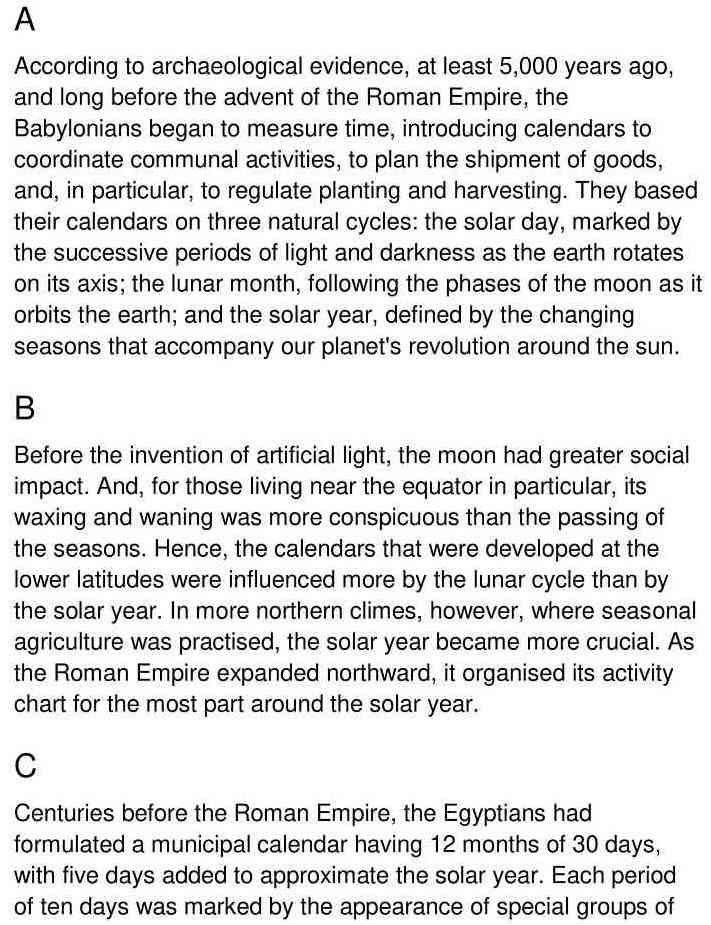
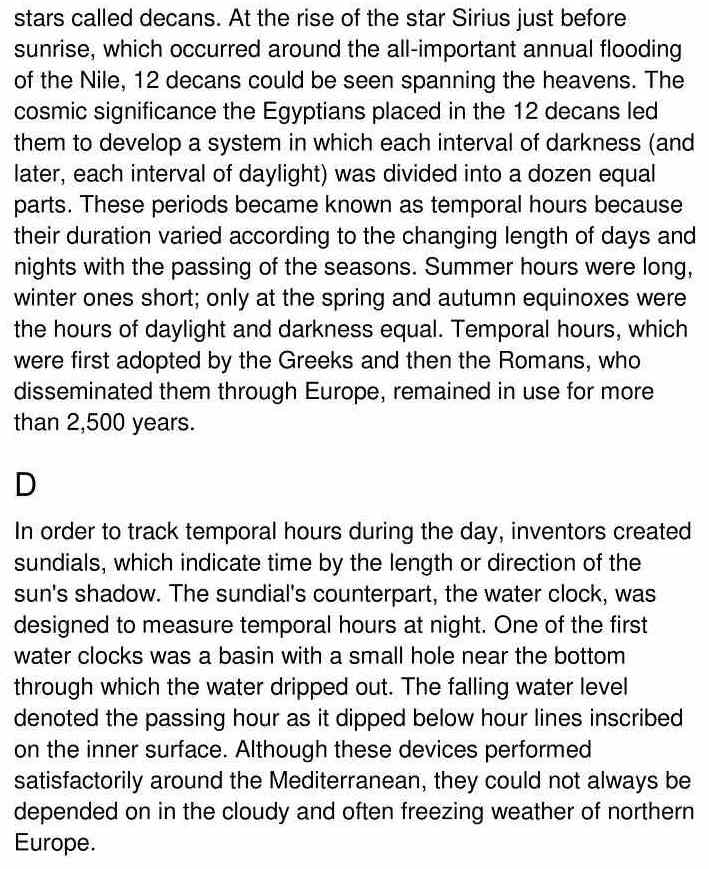
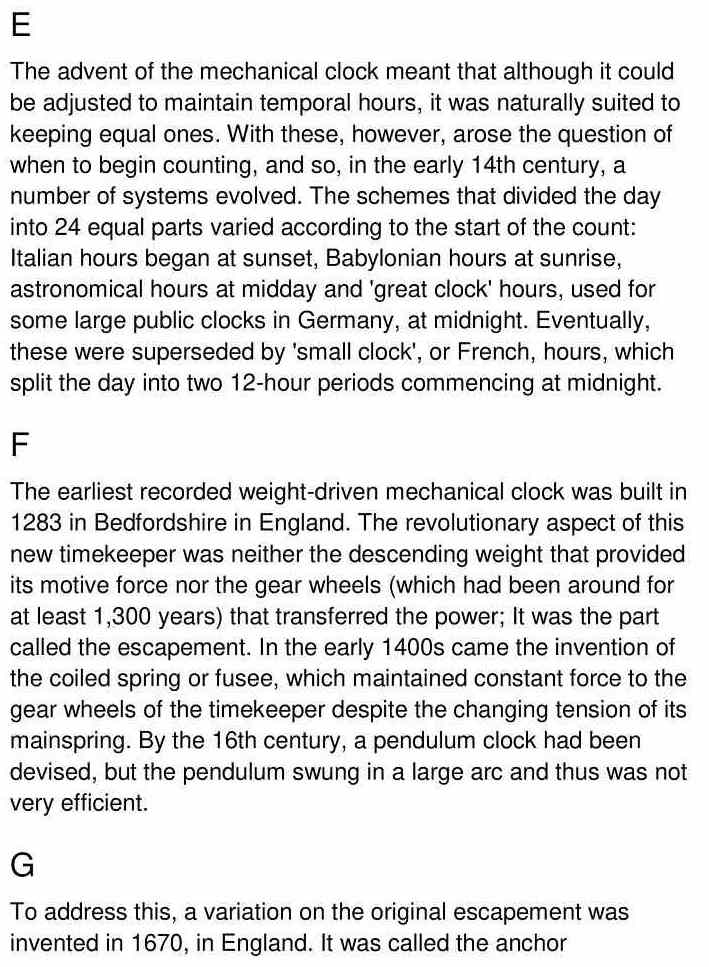
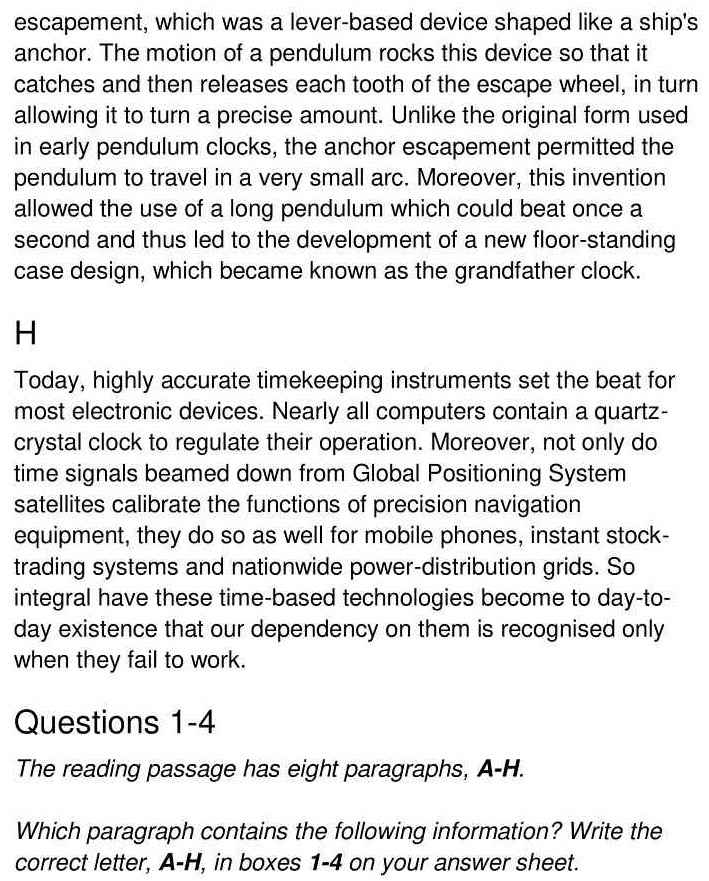
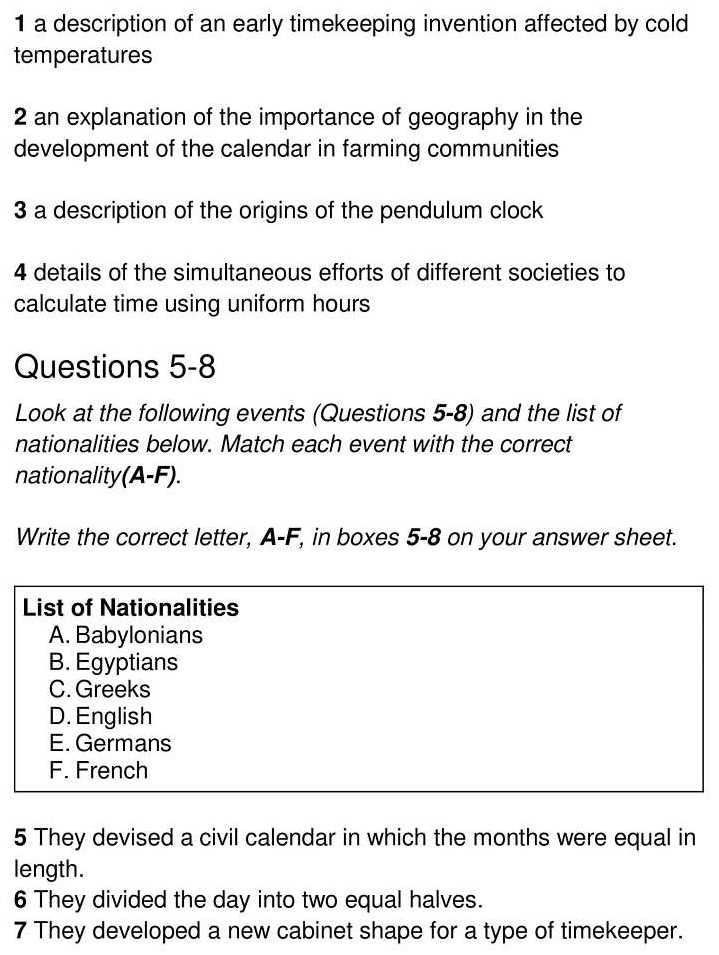

Answers
The answers to questions 1-13 are given below along with their explanations.
| Question Number | Answer | Explanation |
| 1 | D | Paragraph D refers to the fact that in order to track temporal hours during the day, inventors created ‘sundials’ (an early timekeeping invention), which indicate time by the length or direction of the sun’s shadow. The ‘sundial’s counterpart, the water clock’, was designed to measure temporal hours at night. Although these devices performed satisfactorily around the Mediterranean, they ‘could not always be depended on in’ the cloudy and often ‘freezing weather of northern Europe’ (affected by cold temperatures). Hence, the answer is D. |
| 2 | B | Paragraph B informs that before the invention of artificial light, the ‘moon had greater social impact’. And, for those ‘living near the equator’ (geography) in particular, its waxing and waning was more conspicuous than the passing of the seasons. The ‘calendars that were developed at the lower latitudes were influenced more by the lunar cycle’ (importance of geography in the development of the calendar) than by the solar year. In more northern climes, however, where ‘seasonal agriculture’ (the practice of the farming communities) was practised, the solar year became more crucial. Hence, the answer is B. |
| 3 | F | Paragraph F brings out the fact that by the 16th century, a ‘pendulum clock had been devised’ (origins of the pendulum clock), but the pendulum swung in a large arc and thus was not very efficient. Hence, the answer is F. |
| 4 | E | Paragraph E shares the fact that in the early 14th century, ‘a number of systems evolved’. The schemes that divided the day into ‘24 equal parts’ (uniform hours) varied according to the start of the count: ‘Italian hours’ began at sunset, ‘Babylonian hours’ at sunrise, astronomical hours at midday and ‘great clock’ hours, used for some large public ‘clocks in Germany’, at midnight (simultaneous efforts of different societies).
Hence, the answer is E. |
Unlock Answers
| 5 | B | In paragraph C, the writer has written that centuries before the Roman Empire, the ‘Egyptians’ had formulated a ‘municipal calendar’ (civil calendar) having ‘12 months of 30 days’ (months were equal in length), with five days added to approximate the solar year. Hence, the answer is B (Egyptians). |
| 6 | F | Paragraph E claims that eventually the ‘schemes that divided the day into 24 equal parts’ were superseded by ‘small clock’, or French hours’, which split the ‘day into two 12-hour periods’ (divided the day into two equal halves) commencing at midnight. Hence, the answer is F (French). |
| 7 | D | Paragraph G mentions that a ‘variation on the original escapement was invented in 1670, in England’. It was called the anchor escapement, which was a ‘lever-based device shaped like a ship’s anchor’. This invention allowed the use of a long pendulum which could beat once a second and thus led to the ‘development of a new floorstanding case design’ (new cabinet shape), which became known as the grandfather clock. Hence, the answer is D (English). |
| 8 | A | Paragraph A reveals that long before the advent of the Roman Empire, the ‘Babylonians’ began to measure time, ‘introducing calendars’ (created calendar) to ‘co-ordinate communal activities, to plan the shipment of goods and, in particular, to regulate planting and harvesting’ (organise public events and work schedules). Hence, the answer is A (Babylonians). |
| 9 | anchor | Paragraph G communicates that a variation on the original escapement was invented in 1670, in England. It was called the anchor escapement, which was a lever-based device shaped like a ship’s anchor. Hence, the answer is ‘anchor’. |
| 10 | Escape wheel | Paragraph G discusses a variation on the original escapement that was invented in 1670, in England. The motion of a pendulum rocks this device so that it catches and then releases each tooth of the escape wheel, in turn allowing it to turn a precise amount.
Hence, the answer is ‘escape wheel’. |
| 11 | tooth | Paragraph G conveys that a variation on the original escapement was invented in 1670, in England. The motion of a pendulum rocks this device so that it catches and then releases each tooth of the escape wheel, in turn allowing it to turn a precise amount.
Hence, the answer is ‘tooth’. |
| 12 | Long pendulum | Paragraph G states that a variation on the original escapement was invented in 1670, in England. It was called the anchor escapement, which was a lever-based device shaped like a ship’s anchor. Moreover, this invention allowed the use of a long pendulum which could beat once a second and thus led to the development of a new floorstanding case design, which became known as the grandfather clock.
Hence, the answer is ‘long pendulum’. |
| 13 | second | Paragraph G tells about a variation on the original escapement that was invented in 1670, in England. It was called the anchor escapement, which was a lever-based device shaped like a ship’s anchor. Moreover, this invention allowed the use of a long pendulum which could beat once a second and thus led to the development of a new floorstanding case design, which became known as the grandfather clock. Hence, the answer is ‘second’. |
Check More IELTS Reading Answers
Also check :
Practice IELTS Reading based on question types

Start Preparing for IELTS: Get Your 10-Day Study Plan Today!
Recent Articles

Nehasri Ravishenbagam

Haniya Yashfeen

Haniya Yashfeen

Haniya Yashfeen
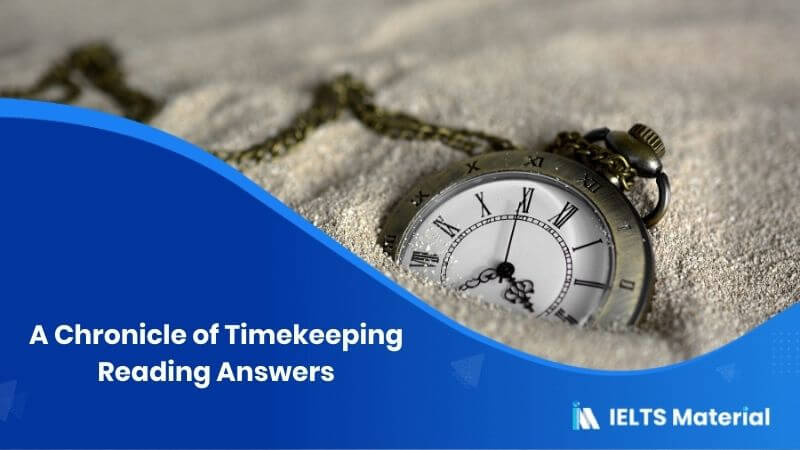



Post your Comments